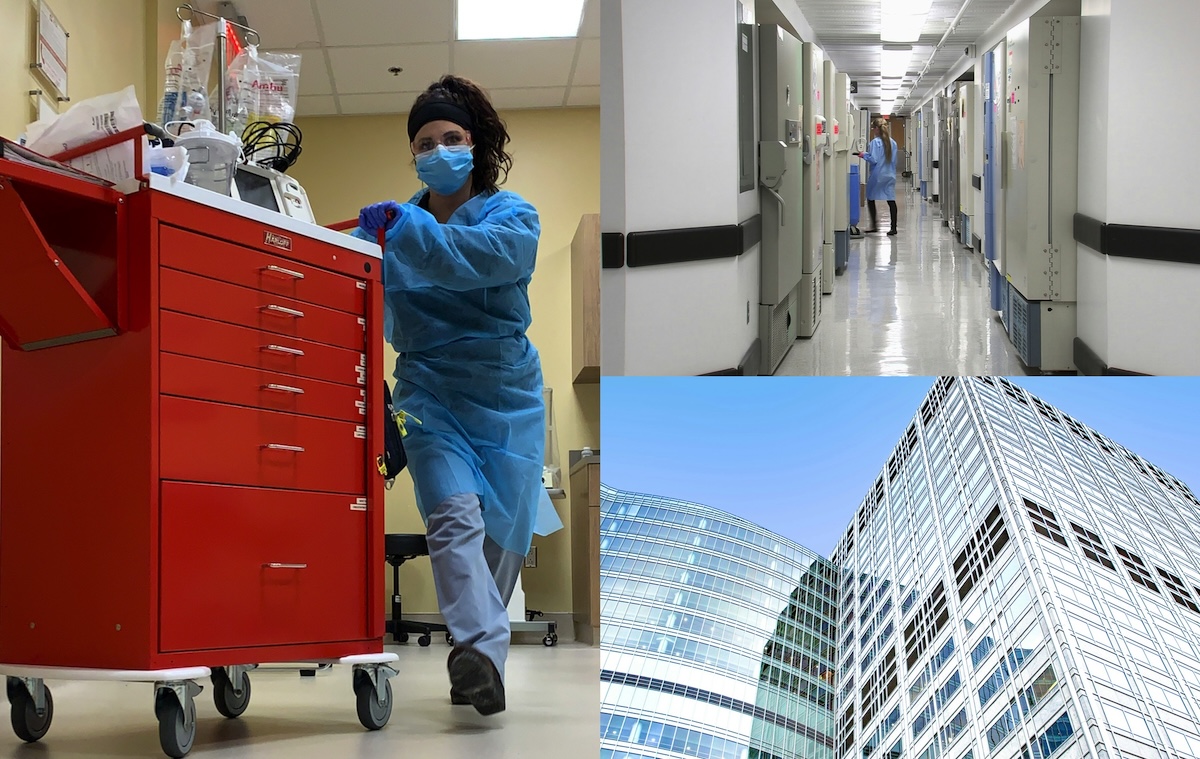High density storage systems can be a little polarizing. We get it. They supposedly offer a secure movable environment for various items ranging from files, supplies, materials, products, and everything in between. Some users proclaim that these systems can double capacity within the same amount of space. And we agree that while track systems do a good job of maximizing shelf space, they often do little to increase efficiency, improve staff satisfaction, and improve a facility’s bottom line. Honestly, ask anyone in healthcare who has to deal with these track systems, and you’ll likely hear a collective groan.
Now, if you’re the procurement officer or manager for a hospital, private clinic, or any healthcare facility, and you’ve got emails flooding your inbox about investing in these high-density track storage systems, this is for you. Keep reading – we’ve got some insights coming your way.
4 Reasons Why Your Medical Facility Should Avoid High Density Storage Systems and Choose More Efficient Healthcare Storage and Cart Solutions
1. Density Poorly Defined … Or Designed
So, let’s chat about the whole marketing spiel around high-density track systems – they’re all about increasing storage space. But, when it comes to medical supplies, it’s not simply about cramming more stuff into a space. Let’s redefine high-density to focus on how much of your inventory can snugly -and properly- fit in there. And as we know – most medical supplies don’t play nice on standard, flat shelves. What you really need is shelving that’s like a custom fit for your inventory – it can make a world of difference.
Don’t let semantics get in the way of making the right investment for your facility. Instead, seek to increase density by assessing storage and identifying areas of inefficiency. The right supplier can often increase storage capacity anywhere from 15-40% within the same footprint as a high capacity track system. For example, this can be accomplished via shelf types that are an appropriate fit for inventory and even optimizing heights between shelves.
2. Not Ideal For Quick Access.
Immediate access to supplies and materials is important in medical environments, especially in departments such as operating room supply and emergency. Time is critical to patient outcomes. While HD track systems excel in creating a lot of shelf area, they also create inefficiencies for staff and their workflows. Individual shelf units can often need to be moved multiple times in order to identify and access supplies. Aisle spaces often need to be shared or split into smaller, less efficient widths. High density track systems may have lots of room but leave too much room for complications.
3. Risk of Injury.
All too often, we see track runs that have been poorly designed. Whether they’re too long with too many shelf units to move, don’t create enough aisle space or have shelf units that are too heavy to move; these factors all contribute to an unnecessary increase in risk of injury. When you consider the current environment of staff shortages, the need to minimize the risk of injury is amplified.
4. Substantial Costs.
High density floor track systems come with extra costs to create level floor tracking or to accommodate their gear mechanisms (that also require maintenance or can be costly to fix). Top track systems are more cost-effective and easier to implement, and are generally the preferred alternative.
Of course there’s also the human cost to consider. Beyond the injury risk, for every minute someone is searching for a product in an OR core supply room, there’s likely a surgical team and patient on an operating table waiting.
And now you know what not to invest in when it comes to your healthcare facility’s storage and cart needs. Don’t hesitate to reach out to Forsyth Healthcare today to discuss products, configurations, prices, shipping, and added service. We have provided ISO-certified storage solutions for some of the largest hospital facilities in Canada.



